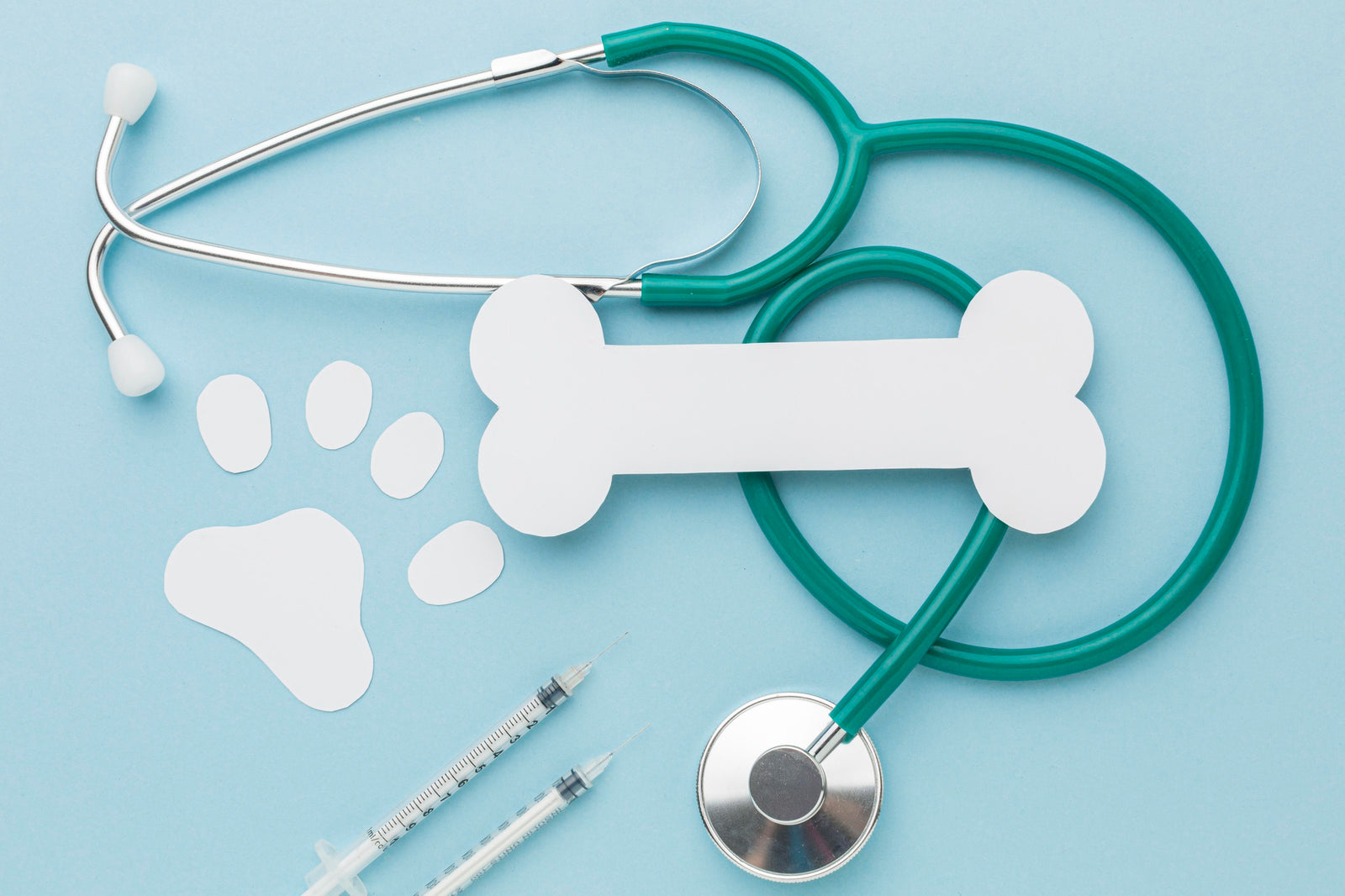Your Cart is Empty
🔥 CLOSE OUT SALE 🔥50% OFF sitewide use code clear final sale, no returns or refunds
🔥 CLOSE OUT SALE 🔥50% OFF sitewide use code clear final sale, no returns or refunds
🔥 CLOSE OUT SALE 🔥50% OFF sitewide use code clear final sale, no returns or refunds

It’s always an exciting time, the pitter patter of new paws when the latest addition to the family arrives home. Whether a tiny puppy, or an older rescue dog, there’s always one question in every family’s thoughts. What do we feed them?
With nearly 9 million dogs in the UK, the pet food industry is on the up and, not surprisingly, families want the best for their canine companions. These fur babies are an important, integral part of family life and what was once a simple decision – dry, home-cooked or tinned, has now become more complex as the market offers a plethora of choice.
to name a few. Add to that beneficial claims such as hypoallergenic, gluten free, fresh ingredients, healthy, human grade meat - how do you choose your dog food when they all appear to be as beneficial as each other? Where should you start? The first step is to realize that all dogs, like humans, are different. Whichever route you decide you must ensure that the diet you choose is 100% balanced and complete.
From the overall cost to where you’re going to store the food. Raw food options will require freezer space, wet and dry food will need somewhere cool and moisture free. Holidays are also an important thing to think about. If you enjoy going abroad but are unable to take your dog with you, you need to consider what provisions kennels may have, or if you are more likely to have a UK camping holiday, can you adequately store your dog food?
Just like humans, dogs need nutrients and a balanced diet. You should always select a food that offers a high meat content and one that doesn’t add cheap fillers such as meat meal, cereals, wheat, barley, beet pulp and maize. These fillers don’t offer any nutritional value. Although they may not cost as much, you could end up feeding more. A high-quality dog food will not use bulking agents meaning your dog will feel full for longer. Avoiding cheap ingredients also minimizes the risk of allergens.
and other enhancers, as these are not good for your dog’s health and well being.
For puppies, select a food that has a higher protein level – they need extra calories to grow into big strong and healthy dogs, so it’s essential that you find a food that’s specifically for a young or junior dog.
All foods on the market, in all categories, have pros and cons. There will be hardcore advocates of raw food diets and those who insist that expensive medically approved dry foods are what your dog should be fed. In reality, a recipe with simple, high quality ingredients that cater for your dog’s dietary requirements is what’s best.
Consider your dog’s needs when you’re thinking about what route to go down – they’re a dog after all, and although a valued member of your family, their needs are very different to that of a human. It doesn’t need to look pretty on a plate, and it doesn’t need lots of fancy ingredients – your dog’s diet needs to smell delicious (to your dog, not you) and give him or her everything they need for their well-being.
Raw feeders generally believe that dogs thrive on what they ate before they were domesticated – i.e. raw meat. Most raw food manufacturers will list benefits as shinier coats, healthier skin, smaller stools and higher energy levels.
If you decide to go down the raw or BARF (Biologically Appropriate Raw Food) then ensure that you

practice exceptional food hygiene, as this food brings a risk of bacterial infections such as salmonella and E. Coli. You’ll also need to ensure that the diet is complete and balanced, and that the bone content isn’t too high as this can cause constipation. You’ll need additional freezer space, and you’ll also need to make sure that the food is fully defrosted before feeding.
Wet dog food come in a tin, tray, pouch or carton and should be stored at room temperature and treated as you would your own cooked meat. Wet food can be more palatable than the other options for your dog as it has a more intense smell and taste, and the higher moisture content can help to keep your dog hydrated which is ideal if your dog tends not to drink too much during the day.
Benefits of a wet diet can include firmer stools, improved digestion, healthier weight, shiny coat and healthy skin. Wet food can have all the nutritional benefits of a raw diet – if the food is gently steam cooked and appropriately packed.
Some foods and packaging – like human foods – will lose a lot of their nutritional value due to being cooked at high temperatures for longer periods of time. There’s also the risk of oxidisation, where the meat looks pink in the middle and brown on the outside as oxygen gets to the food.
There are options that are relatively new to the market that combat this – innovative cartons such as Tetra Pak® keep the food inside fresher for longer as well as reduce oxidisation – Tetra Pak ® is also completely recyclable, which is always a bonus and an important aspect here at the Frenchiestore.
There’s a wide range of dry foods available and they can vary greatly in price, as well as cooking method. Extrusion, baked, cold pressed, air dried or freeze dried – each have their own pros and cons.
Whichever you select, you should always choose a premium dry food as they will have high-quality ingredients. Ensure that the food you select doesn’t include cheap protein in the form of meat-meal or fillers such ascorn, as this is an indication of a lower quality food.

Dry food is digested slower through the system, so if you have a dog that is prone to putting on weight and does minimal exercise, you may want to consider a mixer, or a senior / light option.

A mixer is where you have a base of kibble (dry food) and a topper of either wet or raw. Mixers give your dog variety and balance in their diet, but you must get the percentages right to ensure that you’re giving them enough of everything they need.
The best way to do this is to speak to the dogs vet.

A relatively new option that advertises itself as “home cooked”. These brands use fresh ingredients with minimal levels of processing, but have to be stored in the fridge (or in the freezer if you want to use them at a later date).
If you choose to cook food for your dog, it’s a challenge to get the balance right. Puppies especially need the best possible diet whilst they’re growing.
There are so many options to choose from when you’re getting a new addition to your family, it’s always best to research and seek advice. Take into consideration your personal circumstances, lifestyle and budget and stick to whatever it is that you ultimately decide is best.
Each dog is individual, and some diets will suit some dogs better than others. Always opt for high-quality, natural foods. Think about if the brand that you choose aligns with your personal outlook on life – environmentally friendly, locally produced etc. are just some things to consider.
Once you have decided what you’re going to feed (and which brand), stick with it unless you have issues. If you’ve selected a complete and balanced diet, you won’t need to add any supplements – unless instructed to by your vet of course. If you decide you do need to change diet or brand, do so slowly over at least 2 weeks. Any abrupt changes may cause stomach upset.
Finally feeding guides are exactly that – a guide. If you have a more active dog, they may require more than the suggested amount, but if you have an older or less active dog, you can reduce the amount of food that you’re feeding. Let your dog (and its waistline) be your guide. Vets use a “body conditioning score” to rate if a dog is overweight, although not relevant to every breed, it’s a good place to start.
Comments will be approved before showing up.



Helpful information on the French Bulldog dog breed.
We will also notify you with new releases and special offers.
Informational posts about French Bulldogs. Tips and helpful advice on the Frenchie breed and other breeds.
Sign up to get information & expert advice about pets' health and safety. We will also notify you with new releases and special offers.